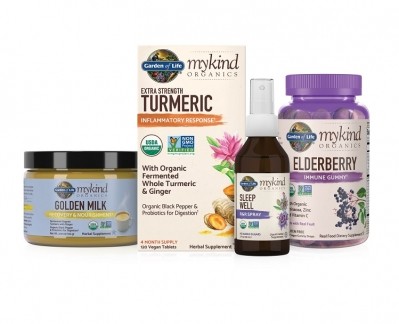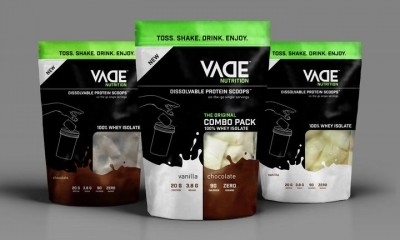Study backs pre-workout supplements' benefits, calls for longer safety studies

But there’s a catch, argued the paper’s authors. “The majority of [multi-ingredient pre-workout supplements] that have been investigated in the literature do not list ingredients beyond a proprietary blend,” wrote the authors, affiliated with the Department of Exercise Science at Lindenwood University and Mayo Clinic Health Systems.
These multi-ingredient supplements usually contain caffeine, branched-chain amino acids, nitrates, creatine, and beta-alanine. But there’s a large amount of variation when it comes to specific dosing of these individual ingredients, or what ingredients make it into the final recipe of a proprietary blend.
“It becomes difficult to make direct comparisons between the effects of a given [supplement] and the equivalent amount of an individual ingredient or from one product to another,” they wrote in their systematic review, published in the Journal of the International Society of Sports Nutrition in August.
Their goal was to comprehensively outline all available empirical evidence of multi-ingredient pre-workout consumption by analyzing existing research papers on the topic, from its safety parameters to its efficacy in delivering benefits such as increased workout volume or improved performance.
Pre-workout supplements may benefit performance
In their systematic review, the researchers looked at 20 studies in the past 10 years. They looked at all relevant measures, even outcomes where data was available but was not discussed by the original authors of a certain paper.
“[This allows] for a more complete and balanced overview of the literature,” they wrote. “Unfortunately, many of the published works on this topic do not include clearly delineated primary outcome measures and instead focus on all statistically significant outcomes to bolster their strength and conclusions. Such an approach may skew the conclusions of the reader, as only the positive aspects of a given supplement are emphasized.”
To account for the diversity of possible amounts and blends of ingredients in the entire category, the researchers created a summary table listing all the ingredients that have been mentioned in published studies on multi-ingredient pre-workouts to date.
The authors concluded that the majority of current literature suggest that supplementation with these products improves various types of exercise performance.
“Given the potential beneficial effects of these supplements demonstrated in the literature to date, further investigations are warranted,” they argued.
But is it safe for long-term use?
The authors also emphasized that safety data in most of these studies were only for short-term supplementation.
“Further research is needed to determine the effects of chronic [multi-ingredient pre-workout supplements] consumption on performance enhancement, training adaptions, and markers of health and safety. Unfortunately, until the FDA implements additional regulations that require companies to bring forth safety data in humans of durations longer than 8–12 weeks, it is unlikely studies longer than this will become available,” they wrote.
Folks worry about the "blend" issue; but food is a blend. Nobody questions what the ingredients in a banana are.
- Dr. Jose Antonio, CEO and co-founder of the International Society of Sports Nutrition
Dr. Duffy MacKay, is senior vice president of scientific and regulatory affairs for the Council for Responsible Nutrition, a trade group representing the dietary supplement industry.
Commenting independently on the study, he said that “while there are no clinical trials set in safety over 12 weeks we do have a regulatory framework that captures signals that identify safety hazards.”
“If I was a reviewer of the paper, I would have reminded the authors about FDA’s adverse reporting system as a post-market surveillance,” he added. “It is essentially designed to pick-up on safety signals that would occur with long-term use.”
When it comes to ingredients like caffeine which has a very clear physiological response and a known toxicity level, MacKay said that CRN requires its members to always disclose the total amount, even if it is part of a proprietary blend, “so consumers know if they take three doses of your product one day, they won’t end up with a high heart rate and high blood pressure and those kinds of things.”
Dr. Jose Antonio, CEO and co-founder of the International Society of Sports Nutrition and editor-in-chief of its journal (in which this current study was published) thinks FDA-required 8-12 week safety data as mentioned by the authors is a pipe dream.
Learning more about the sports nutrition space
NutraIngredients-USA to launch new flagship Sports Nutrition Summit, in association with ISSN
“If that's ever 'required,' then you'll see a tremendous drop in the number of randomized controlled trials done in our category,” he told us.
Andy Swanson, manager of regulatory compliance at Bodybuilding.com, agreed that there is “a paucity of evidence for extremely long-term safety data,” he told us in an email.
“Creating a study that looks at a meaningful amount of people consuming a single supplement daily over the course of months to years is not only extremely expensive, but also very challenging to control. This would mean that a company could spend millions of dollars only to create data that didn’t apply to their product. This is also assuming that the product being tested will not change at all in formulation over the course of the study period,” he said.
“This point is especially important in a category as dynamic and ever-changing as that of pre-workouts. In the meantime, though, we are leaning on the safety data that has been created not just for finished products, but also the single ingredients with which they are made.”
One point that could have made the paper stronger, Swanson argued was if the researchers had submitted [Freedom of Information Act] requests for all available SAEs associated with pre-workout supplements to see what consumers, health care professionals, or others submitted to FDA regarding anecdotal reports of adverse events.
Most popular type of pre-workout supplement, and the best study design for blends
Multi-ingredient pre-workouts, as opposed to their single-ingredient counterparts “are becoming increasingly prevalent in today’s world of sports and fitness,” according to the authors, citing studies of supplement use among athletes published in 2004 and another in 2016.
Echoing this observation are ecommerce sites like Bodybuilding.com and Amazon, where the top results and top-selling pre-workout ingredients are multi-ingredient varieties.
Using proprietary blends is a way companies can protect their intellectual property, said CRN’s MacKay. "The universe of science-based pre-workout ingredients is limited, and this paper does describe several of them, summarizes the science on them, and I think that’s a really key and strong part of the paper,” he said.
A good design for efficacy studies for the category, MacKay argued, was the one used in a 2018 study by researchers in Kentucky which was included in the Lindenwood researchers’ systematic review.
“They used a caffeine containing multi-ingredient product versus a caffeine-matched placebo versus a full placebo—that’s a really clever study design,” MacKay said.
“It helps you indicate, ‘is my multi-ingredient formula providing synergistic benefits above and beyond the known effects of caffeine alone?’ That study design solves some of these challenges [studying proprietary blends].”
He added: “It’s really thoughtful of the authors as a point to some of the limitations inherent in studying proprietary blends. They point to someone who has worked some of this out.”
ISSN’s DR. Antonio said that “the fact that there are studies on actual finished products is a great thing.”
He highlighted that because blends vary, finished products should be studied as a single entity and results from a clinical trial for one blend should not be applied to another. But the use of proprietary blends shouldn’t scare off buyers.
“Folks worry about the "blend" issue; but food is a blend,” he argued. “Nobody questions what the ingredients in a banana are.”
Source: Journal of the International Society of Sports Nutrition
Published online, https://doi.org/10.1186/s12970-018-0247-6
Multi-ingredient pre-workout supplements, safety implications, and performance outcomes: a brief review
Authors: Patrick S. Harty, et al.

















